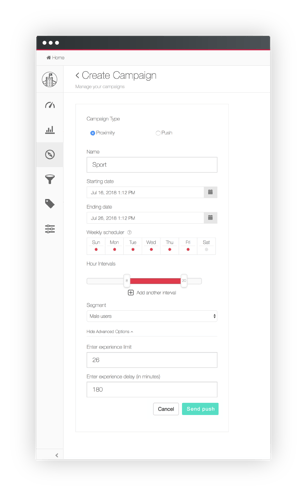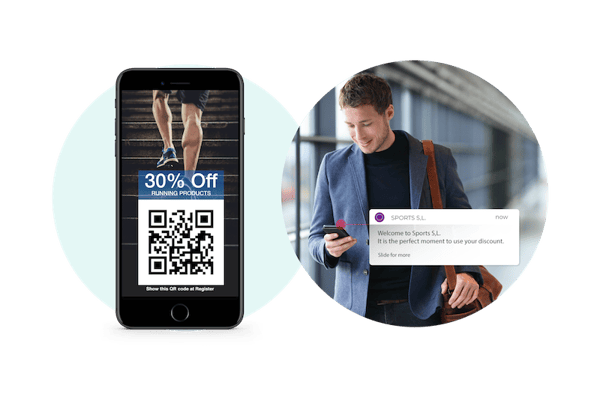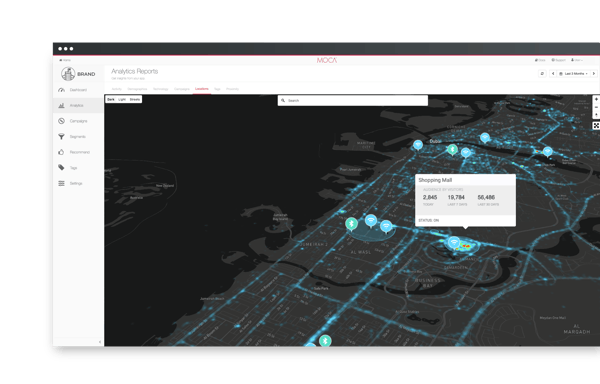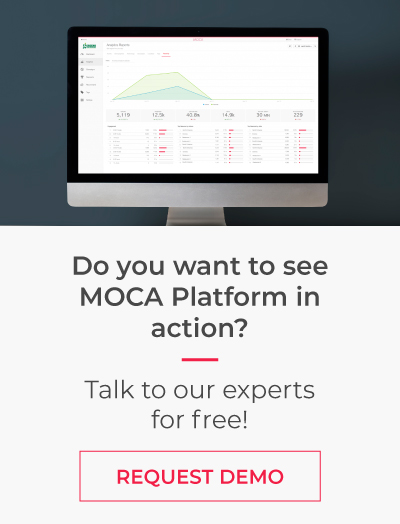With 40 percent of mobile searches having a local intent, it's easy to see why location marketing is something you'll want to consider embracing as part of your overall marketing and engagement strategy. When on mobile devices, most people spend their time in mobile apps, presenting another potential source of engagement. The location technology available today also presents many opportunities for marketers looking to boost their return on investment. By adhering to some of the best practices like the ones discussed here, businesses can increase their possibilities of enjoying effective and successful location-based marketing campaigns.
To deliver mobile engagement campaigns, you'll need a platform. A lot of providers offer a trial version. At MOCA, we offer a free demo and consultancy.
1) Target the right customers: Who they are, How they behave, and Where they go
Targeting campaigns is really important due to it allows you to interact with the right customers in that special micro-moment based on who they are, how they behave, and where they go. The location should be somewhere where an intended customer is likely to be ready to take some type of action, or at least be open to a suggestion to do so. Businesses can get a better idea of where campaigns should be used by understanding their customers' behaviors and considering things such as:
- How much time customers spend in a certain place or zone
- Identifying frequent visitors Vs new visitors
- Tagging users that visited your competitor location to bring them back
- Understanding audience to discover customer journey in real-time.
One of the best practices to adhere to for any mobile marketing campaign is how often messages are delivered since there's a fine-line with marketing for most brands between offering something potentially useful and being viewed as annoying. So, in order to avoid that, you should use Capping Rules. It enables you to establish target, schedule, frequency, and limits to your location-based campaigns. For example:

- Schedule: It enables you to set up your campaigns by days and by hour intervals
- Target: It allows you to segment your audience based on demographics, language, visit duration, purchase history, and other attributes.
- Frequency: It enables you to set up the maximum number of times an individual user sees your campaigns
- Impressions limit: It allows you to control the maximum number of impressions you will allow an individual user to have per day.
People may not care so much about a great deal on a party pizza combo on Monday. Campaigns should be based on times of the day, location and behavior, when people are likely to be engaged for what's being offered.
Location technology includes the use of beacons and geofencing marketing that can be used to send out mobile communications when a customer is in a particular place or zone. The key to a successful location-based marketing campaign is to use moderation and avoid the temptation to overwhelm customers.
2) Engage your customers using different marketing campaigns
To truly engage your users and build meaningful relationships with them, you need to provide relevant content at the right time at the right place.
The first thing to figure out is what is being offered. While the "what" can be special offers, flash sales, purchase reminders, etc. Mobile campaigns can also be effective when simply alerting people in the area of relevant products, services, events, or venues they may be interested in.
Make mobile an integral part of the customer experience using different marketing campaigns:
- Event-Triggered messaging – Engage the user by triggering push or in-app messages based on a set of event(s) made by a user with particular user attributes.
- Proximity triggered notifications – Using beacons or an existing Wi-Fi network, you will be able to trigger location-based content when a customer enters, leaves or stay a certain period of time in an indoor location.
-
Geolocation triggered notifications– Setting up a virtual fence to send customers geo-targeted campaigns when they enter, leave or stay a certain period of time an outdoor location.

You can find location marketing examples here.
Not every product or service is going to be something that can be promoted effectively with a location-based campaign. For instance, an employment app can generate a lot of activity among its users, event-triggered campaigns will likely be more effective.
3) Measure and collect customer data
In case you're using location-based campaigns you can determine how well they are going with real-time data. Thee screen below shows how users interact with physical locations allowing businesses to make data-driven decisions about which campaigns are working and which ones aren't worth the effort.

Using geolocation you can measure store activity and provide a better understanding of customer behaviors and preferences. Keeping track of campaign data allows businesses to:
-
Measure reached users, opens and conversion rates for your campaigns over a specified time period.
-
See what locations, days of the week, and hours of day perform best.
-
Go beyond campaign opens to see who is engaging with your campaigns and what actions your users take.
-
Effectively use offline behavior data to determine the most efficient way to use mobile technology for engagement efforts.
-
Test different location-based marketing campaigns with limited engagement and use results to determine which one will likely be effective on a larger scale.



.png?width=600&name=mock-up-mobile-laptop%20(1).png)


